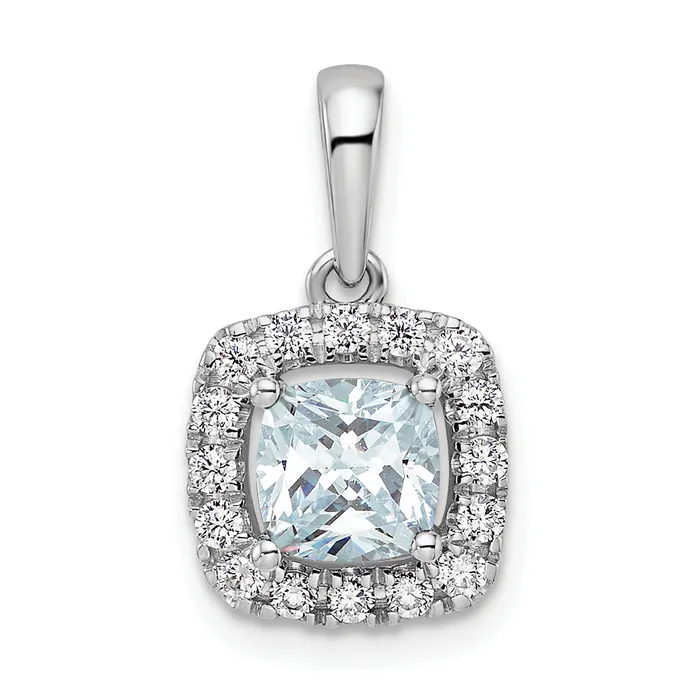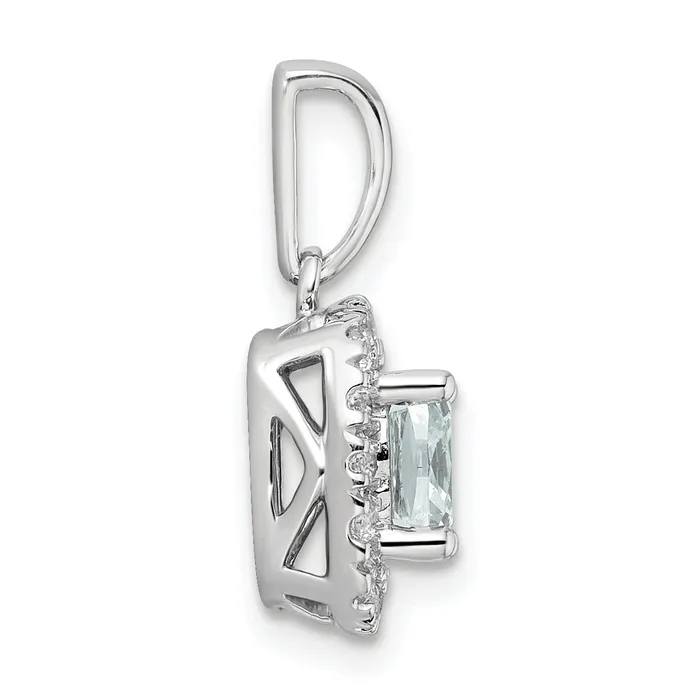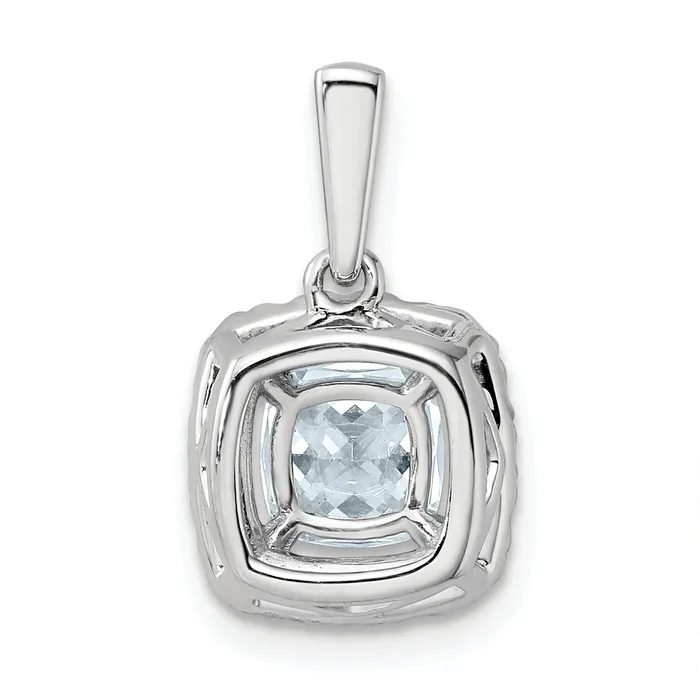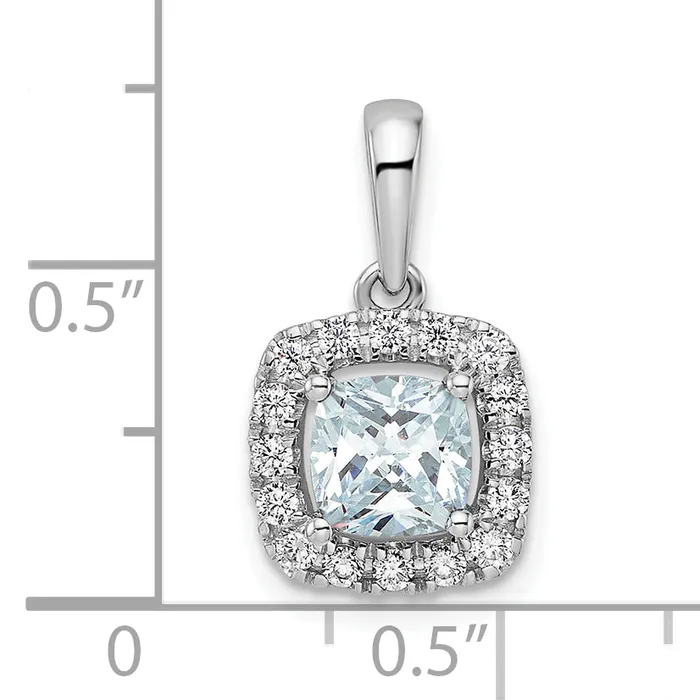Introducing the stunning 14k White Gold 1/4 Ct. Lab Grown Diamond VS/SI+ G+ March Birthstone Aquamarine Halo Pendant. This elegant piece features a mesmerizing aquamarine gem set in a polished 14k white gold frame, accentuated by lab-grown diamonds. The cushion-cut aquamarine, warmed by subtle heating, offers a calming blue hue. Surrounding its beauty, 16 dazzling round diamonds create a breathtaking halo. The pendant measures 12mm in length, with a secure open back. Its profile is perfect for any occasion. Elevate your jewelry collection with the aquamarine halo pendant's timeless charm today.
SKU: PM9037-AQ-028-WLG
UPC: 883957790558
Precious Metal Type: 14k White Gold
Length: 12 mm
Width: 10.8 mm
Weight: 1.66 gm
Diamond Weight: 0.28 ct
Gemstone Weight: 1.0 gm
Finish: Polished
Charm/Element Thickness: 6.45 mm
Stone Shape : Cushion
What Are Lab-Created Diamonds?
Lab-created diamonds are an exceptional blend of science and craftsmanship. While natural diamonds are formed deep within the earth over billions of years, lab-created diamonds are grown in controlled environments using advanced technology that replicates the natural process. By applying extreme heat and pressure, these diamonds are fully formed within weeks to months. Since they can be produced in abundance, lab-created diamonds are typically more affordable, making larger diamonds more accessible. However, their abundance may affect their long-term value.
Are lab-created diamonds the same as natural diamonds?
Lab-created diamonds share the same optical, physical, and chemical properties as natural diamonds. The primary difference lies in their origin and the time taken to form.
Is a lab-created diamond better?
Both lab-created and natural diamonds vary in grading. Lab-created diamonds often allow buyers to maximize their budget, offering more size for the same cost. Natural diamonds, however, are celebrated as unique works of nature.
Where do lab-created diamonds come from?
Lab-created diamonds are formed in laboratories using advanced technology. A diamond seed—a tiny carbon crystal—is exposed to high heat and pressure with a carbon coating to grow into a larger diamond crystal.
Are lab-created diamonds or natural diamonds higher quality?
Neither type is inherently higher quality, as both are available in a range of colors, cuts, clarity, and carat weights.
Can a trained eye distinguish lab-created from natural diamonds?
Because lab-created diamonds share the same optical, chemical, and physical characteristics as natural diamonds, they cannot be distinguished even under 10x magnification.




